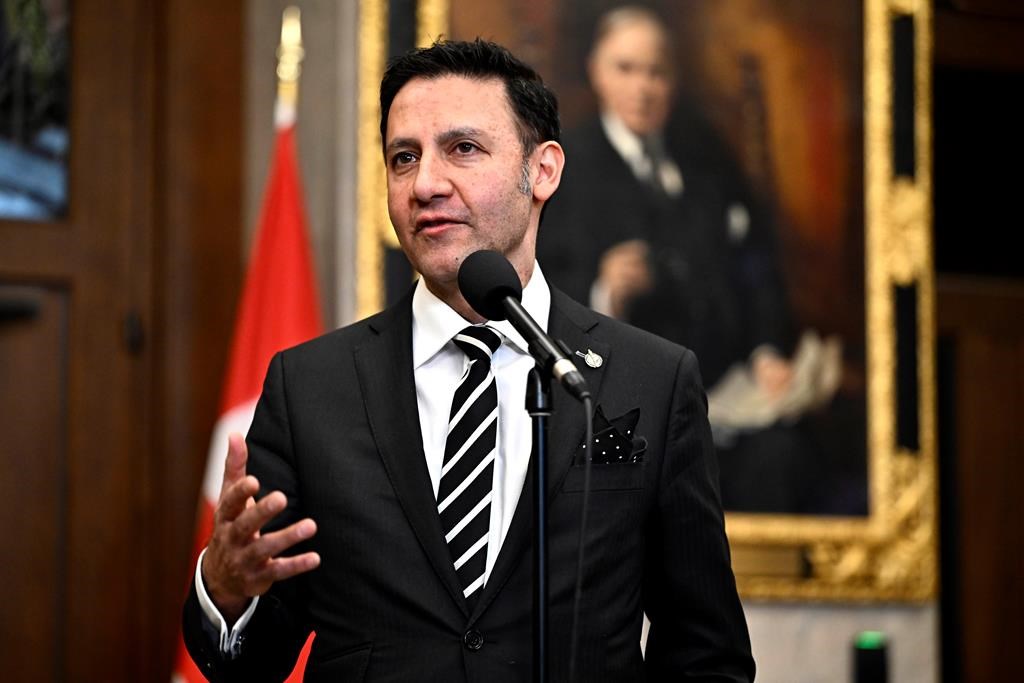Facilitated communication: From immense hopes to great skepticism
Posted Jun 30, 2016 6:59 am.
Last Updated Jun 30, 2016 8:20 am.
This article is more than 5 years old.
It has been described as a discredited cult that just won’t die.
But there was a time when facilitated communication won widespread praise for miraculously unlocking the communication skills of non-verbal people, particularly those with severe autism.
Developed in Australia in the 1970s, the method was introduced to North America in the early 1990s by educator Douglas Biklen, who founded the Facilitated Communication Institute at Syracuse University in Upstate New York.
The technique is simple enough. The non-verbal user points to letters on an alphabet card or types on a keyboard — but they have help. A so-called facilitator holds the user’s hand, wrist, arm or shoulder, providing support and some pressure, and they usually hold the card or keyboard as well.
Proponents say the added support helps overcome fine-motor difficulties that are common among those with severe autism, cerebral palsy and some brain injuries.
The technique’s initial popularity is easy to explain. Stunning anecdotal accounts, carried widely by the mainstream media, portrayed once silent, uncommunicative children suddenly expressing complex thoughts and feelings to their awestruck parents.
But as the method gained followers, critics noted there was no empirical, peer-reviewed research to verify the claims behind this sudden, mind-boggling breakthrough, said Adrienne Perry, a clinical psychologist at York University in Toronto.
“We and many other people in other countries did research on it,” said Perry, who has over 20 years of experience in the field of autism and developmental disabilities.
“Virtually all of the results from all of the studies were saying there’s no evidence that the communication is really coming from the clients … Clearly, it was that the facilitators were unconsciously — and presumably with good intentions — influencing the communication.”
In study after study, facilitators were shown to be adept at answering questions they already knew the answers to, but faltered when their knowledge was lacking, she said.
“Studies have repeatedly demonstrated that FC is not a scientifically valid technique for individuals with autism or mental retardation,” the American Academy of Child and Adolescent Psychiatry said in a 2008 statement.
“In particular … (FC) should not be used to confirm or deny allegations of abuse.”
Even though a long list of medical associations and disability groups have dismissed the technique as pseudo-science, its proponents remain steadfast in their conviction that FC works — in stages.
The Institute on Communication and Inclusion at Syracuse University — the new name for the Facilitated Communication Institute — issued a statement on training standards last fall, saying facilitators must take steps to ensure they are not influencing the communication.
“Do not accept selections unless the communicator has looked first,” the statement says, adding that users should demonstrate the ability to convey information not known to the facilitator.
The institute conceded that physical contact makes it possible for users “to be influenced in their pointing.” But the goal of this training, the institute says, is independent communication.
“We must not forget that this physical support is always provided as a training mechanism to help the individual to learn to use his or her body differently,” the statement says. “The goal is always a fading of that support toward independent access of a device.”
And when an allegation or critical information is conveyed through FC, the institute says, extreme caution must be used. “It is vital to take special measures to confirm authorship,” the statement says.
Tina Fougere, president of the Canadian National Autism Foundation, said she was aware of the criticisms of FC, but she said the method has been used as a stepping stone to help some non-verbal people move on to independent communication.
“If it is something that an individual can use to express themselves … then they have that right to try,” Fougere said in an email.
To be sure, FC supporters have their own studies to point to. And they often complain that the tests used to debunk the technique are invalid because they put too much pressure on the people being assessed.
“A testing situation can be really stressful,” said Estee Klar, founder of the Autism Acceptance Project and a doctoral researcher finishing her PhD in critical disability studies at York University. “I don’t think a testing situation is a safe environment.”
As well, she said the skill of recalling events can be difficult for those with autism.
“It’s much easier to talk about things in the moment for autistic folks, because things in the moment are either visually accessible or the subject matter is immediate. When you’re putting them under testing methods … it needs to be practised.”
FC sessions dealing with difficult topics like sexual assault require a great deal of preparation to ensure the user is aware of what is expected, said Klar, who stressed that she doesn’t endorse any one communication method.
“Any method can be abused by anybody. Am I cautious about some people using FC? Absolutely. Have I also seen FC used very well? Absolutely.”
When asked about the empirical studies that found FC doesn’t work, Klar said: “I’m really hesitant to talk about studies and speeding into this loop of proof and disproof … That whole debate is very problematic.”
In Canada, it’s difficult to determine how many people are still using FC.
Laurie Mawlam, executive director of Autism Canada, said she doesn’t hear much about FC anymore, mainly because there are other forms of augmented communication available that don’t require a facilitator.
“We are seeing a shift to people using devices on their own accord to express themselves,” she said in an email. “People using these devices and applications are not being influenced by a facilitator.”










